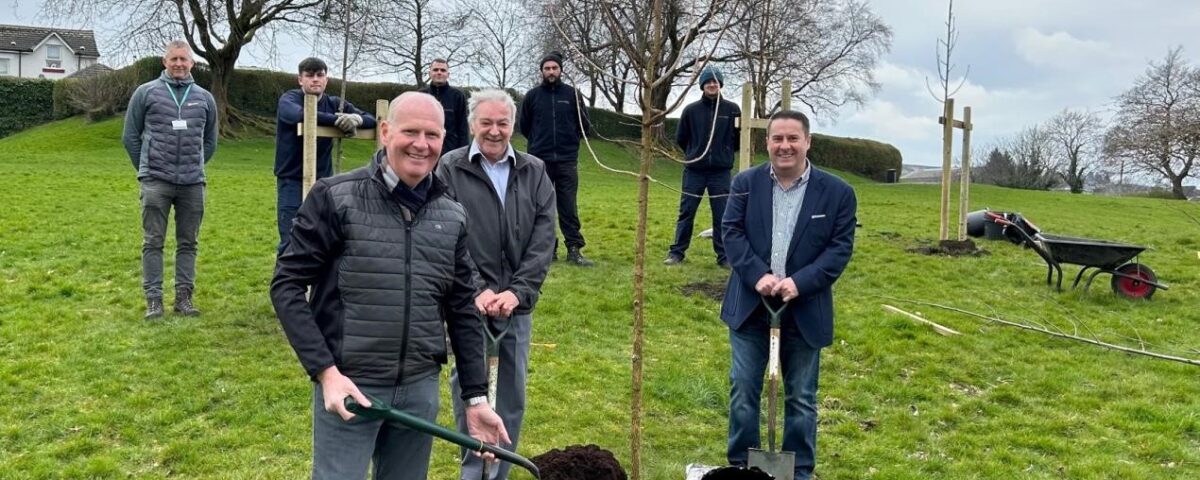Over 300 Trees Planted Across Inverclyde

Tunnels Vision Thanks To £30k Makeover
31/03/2023
£250k Funding Award Towards New Community Hub
05/04/2023Over 300 Trees Planted Across Inverclyde

Murdieston Park, Greenock, tree planting by Inverclyde Council. Councillor Michael McCormick, front, with councillors John Crowther, left, Tommy McVey, right, and council grounds staff in the background.
A massive tree planting exercise is underway across Inverclyde with over 300 added to local greenspaces.
Grounds staff from Inverclyde Council have this week been adding species including rowan, field maple, and silver birch to Murdieston Park, Greenock.
Trees are being proactively planted throughout the area to replace ash trees that have had to be removed or cut back due to infection by ash dieback, an incurable fungal disease that causes instability and death of the tree.
Over 300 trees in total will have been planted by the end of April 2023 to make up for roughly the same amount lost through disease.
This week alone, over 40 have been added in Murdieston Park and many more trees are due to be planted throughout the area during the 2023/24 financial year.
Councillor Michael McCormick, Inverclyde Council’s convener of environment and regeneration, said: “Nobody wants to lose any trees and it’s a real shame that so many have had to be removed or cut back due to ash dieback, but the nature of the disease means it kills trees from the inside making them unstable and poses a serious safety risk for people and property. There is currently no cure for the infection and ash dieback is an issue affecting the whole of the UK.
“But it’s great to see our grounds staff out and about trying to offset that by replanting trees in so many areas, including here in Murdieston Park. There’s also a great mix of species being added which are more disease resistant.
“This work will only enhance what we already have in our many wonderful parks and outdoor spaces and is part of the council’s overall strategy to encourage and promote biodiversity and offset harmful carbon emissions.”
Recently, the council planted 25 new trees at Birkmyre Park in Kilmacolm and they were adopted as part of the Queen’s Green Canopy project in memory of the late Queen.
As well as planting trees, local authority staff will also be sowing wildflowers and allowing grass in some areas to grow longer to encourage biodiversity.
Many ash trees have had to be removed in recent times due to ash dieback. The disease is spread by an airborne fungus called Hymenoscyphus Fraxineus.
Once the tree is infected, the fungus blocks water movement causing leaf loss, making the tree unstable and eventually leading to its death.
The council has been working in areas of high risk to the public, for example near schools, children’s play areas, public parks, and parts of cycle tracks, to remove as many infected trees as possible prior to this year’s nesting season.
Branches on some larger trees have been cut back but the main body is left intact – a process called ‘monolith’ – to support natural habitats of insects and wildlife.


